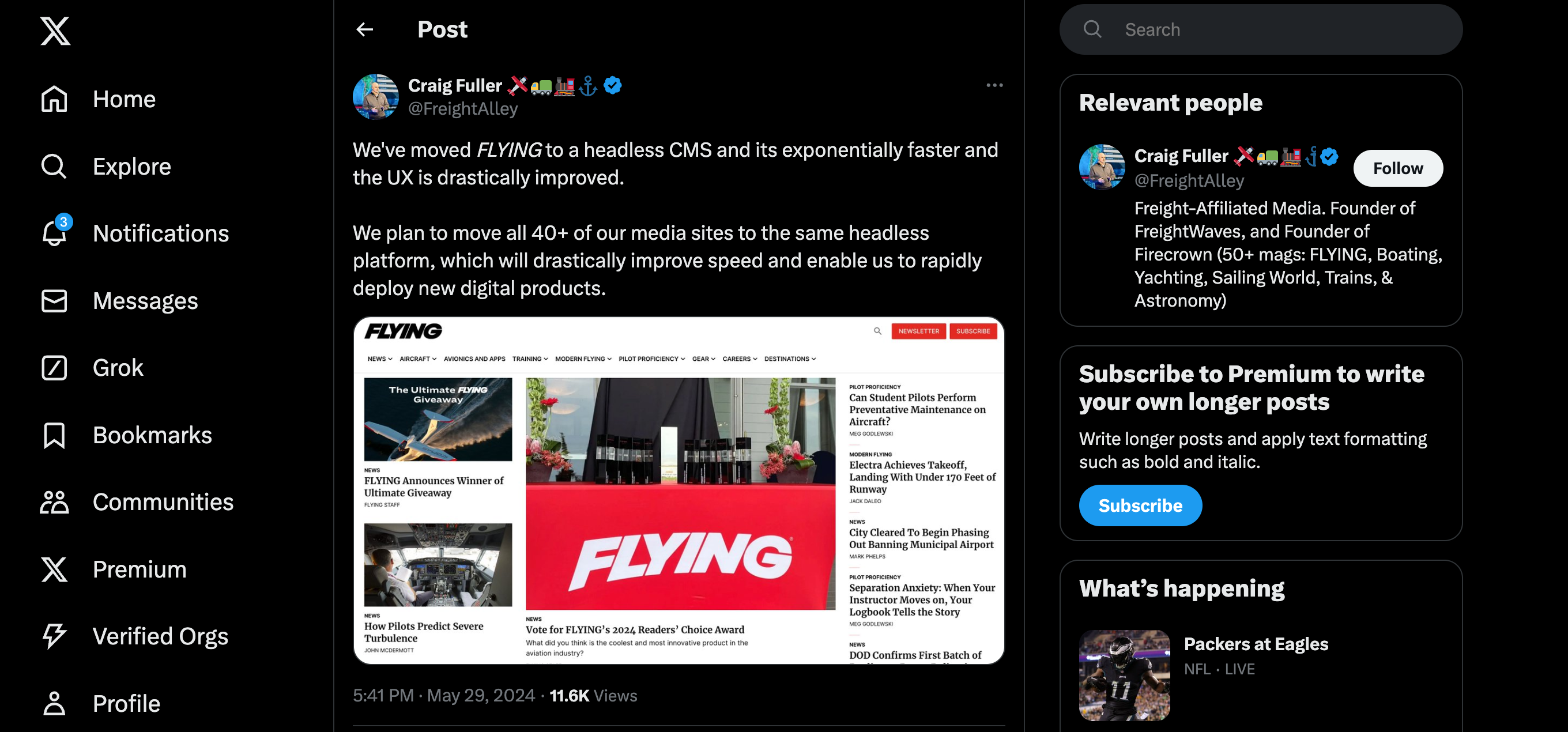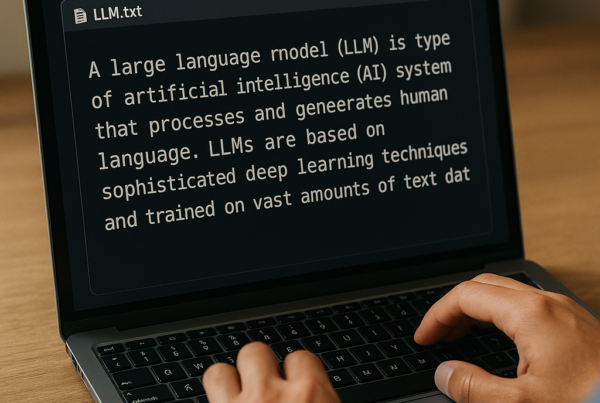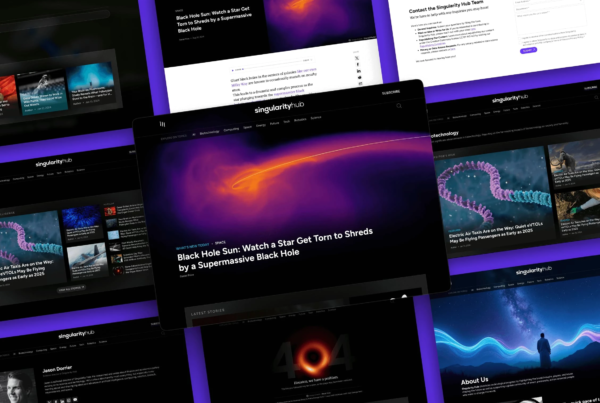The AMO Summit, put on by A Media Operator’s Jacob Donnelly, pulled together a mix of media minds to discuss hot topics like AI, monetization, and community. Here are Flexpress’s key takeaways.
.jpeg)
Summit-goers heard from a compelling cross section of industry leaders, including FreightWaves CEO Craig Fuller, The Juggernaut founder Snigdha Sur, iPullRank’s Mike King, and Dotdash Meredith’s CEO Neil Vogel. Each session brought a new perspective on common media challenges, though throughout the 10+ sessions, a few meta-narratives on the industry emerged:
- Content quality and reader value are key to future-proofing
- “Make money in respectful ways”
- Keep your revenue options open
- Ads (still) matter
- Targeted AI usage is a force multiplier, but it requires careful treading
Read on for Flexpress’s summary of what we heard during the AMO Summit, and how these key takeaways came up during the summit.
1: Content quality and reader value are key to future-proofing a media business
It’s safe to say Flying Media Group is on an acquisition tear, having purchased more than seven marine media titles from Bonnier as recently as October 24. This in addition to the 25 brands the company has purchased since buying Flying Magazine in July 2021. It’s an exemplary pace during a period that has been relatively quiet for M&A. What makes CEO Craig Fuller and CCO Preston Holland so bullish? They believe acquiring brands is not about buying a business, but buying an audience, and creating content that can support commerce.
Flying Media Group’s chosen brands have a few things in common. For one, they’re historic media brands, which Google ranks highly. Fuller mentions “even Meta and Google have trouble competing” with such high-quality content from long-standing, authoritative websites.

Crucially, these brands also have high-value audiences—especially after lowering circulation and improving the ad experience of their print products. As Holland put it: “No shit ads.” From there, the company has found a business in real estate as well as financing for “exotic” assets like airplanes, leveraging their audience of well-heeled enthusiasts to carve out unique revenue streams.
This emphasis on top-notch content and highly engaged audiences was not limited to Fuller and Holland’s opening panel. The Juggernaut CEO and Founder Snighda Sur emphasized the purchasing power of her company’s core audience, South Asians in America, while James Capo, president of audience marketing platform Omeda, emphasized that investing in audience and “creating content people cannot reproduce” is key to countering traffic headwinds caused by declines in social media referrals and search algorithm updates.
And to really bring the point home, Maureen Sullivan, partner at the investment firm TCG, emphasized that brands that win in this cool M&A environment demonstrate real community momentum and have a passion-driven audience. From there, Sullivan says “we can figure out the monetization.”
2: “Make money in respectful ways”
“Media’s not complicated,” says Dotdash Meredith CEO Neil Vogel. The key? Make high quality content, grow your audience, and “make money in respectful ways.” For media powerhouse Dotdash Meredith, that means creating safe environments for intent-driven audiences at large scale. Though about a third of Dotdash Meredith’s revenue comes from affiliate content—a brand-specific operation powered by real product testing—Vogel also notes that the company still makes money via traditional print, brand licensing, and tasteful online display advertising.
3. Keep your revenue options open
Rafat Ali, Founder and CEO of Skift, puts it this way: “The oldest rule in media monetization is diversify, diversify, diversify.” That is, in the case of his travel brand, by leveraging AI and charging for premium content after what he calls “an 8-year free trial.”
For Vogel’s part, he noted that each publishing modality has its benefits. Web publishing is for service and utility, social posting is for fun, and print lends gravitas. “If you do things the right way,” he says, “you’ll have lots of optionality.”
4. Ads (still) matter
Overall, ads remain an important part of the monetization ecosystem for most of the speakers. Though, as Capo mentioned, programmatic is flagging. “That party may be coming to an end,” he says. Still, many of the attendees mentioned courting premium advertising partners and sponsors. The Flying Media Group execs, for example, lowered the print magazine’s circulation while increasing ad revenue by winnowing down the inventory to hit “highly cultured” households, making the base much more attractive to advertisers.
“The magazine is broken; it’s completely ridiculous,” Fuller says. “The higher I scale the more money I lose. That math doesn’t work for me.” Fuller and Vogel are both not praying to the rate base idol. “We aren’t providing bullshit [circulation] numbers. Instead we’re giving them what they care about,” that is, high-value, high-intent, passionate readers.
Even beyond print, ads still have their day. Punchbowl News Founder and CEO Anna Palmer said the leadership team considered launching the 2021-founded political news brand without ads, but “why would you cut off a big revenue driver?”
5. Targeted AI usage is a force multiplier, but it requires careful treading
Artificial intelligence is a familiar touchpoint for media companies in 2023. The takeaway from the AMO summit was: use it, but use it well. “You can’t rail against it,” Ali says, “so adopt it.” As iPullRank’s Mike King mentioned, writers are already using these tools—even if they’re not telling you.
Even though Ali says “the shine has come off [AI] a little bit” in the latter half of this year, there are a lot of ways media companies can use it to improve business. A few examples came from Alexit Dufresne, the CEO of Faaveo, whose Essentials newsletter tool uses AI to improve reader engagement. For example, publishers can “unlock” their content archive, presenting existing (but newly relevant) content and breathe more life into older pieces. AI can power smart personalization to encourage readers to read about new topics or emerging trends based on their reading history. AI can generate smart abstracts, enable chatbots, and make it easier for people to source or follow topics.
But the first step for any AI project in online media: make sure you’re only pulling data from authoritative sources. Media brands, King mentioned, should make sure to use exclusively authoritative (or maybe even purely internal) sources of data. “AI will always hallucinate,” he says. And it’s important to use it as a tool for editors, not to replace them. King cautioned against diluting media brands with AI content.
And what about Google’s Search Generative Experience, which intends to use AI to surface the most query-relevant tidbits from a larger article? The bad news: King thinks media sites should brace for a “30-40% loss” in organic search traffic. The good news: Artificial intelligence as it exists today can’t really be considered authoritative to either Google or readers. Google still cares about author bylines, so even if a brand didn’t care at all about diluting the brand, replacing creators with ChatGPT in order to flood the internet with lots of AI-generated content wouldn’t greatly improve outcomes in search. “Using AI is a force multiplier,” King says. “Build it into processes you already have.”
For his part, Vogel is excited to see AI’s implications in Analytics, and seemed skeptical when hearing King’s loss predictions. He says about AI: “I’m not optimistic and I’m not pessimistic.”
Final thoughts:
Every panel at the AMO Summit packed kilos of operating insights—from community building to monetization diversification to the future of media buying. Want Flexpress’s full notes from the event? Please feel free to reach out.




